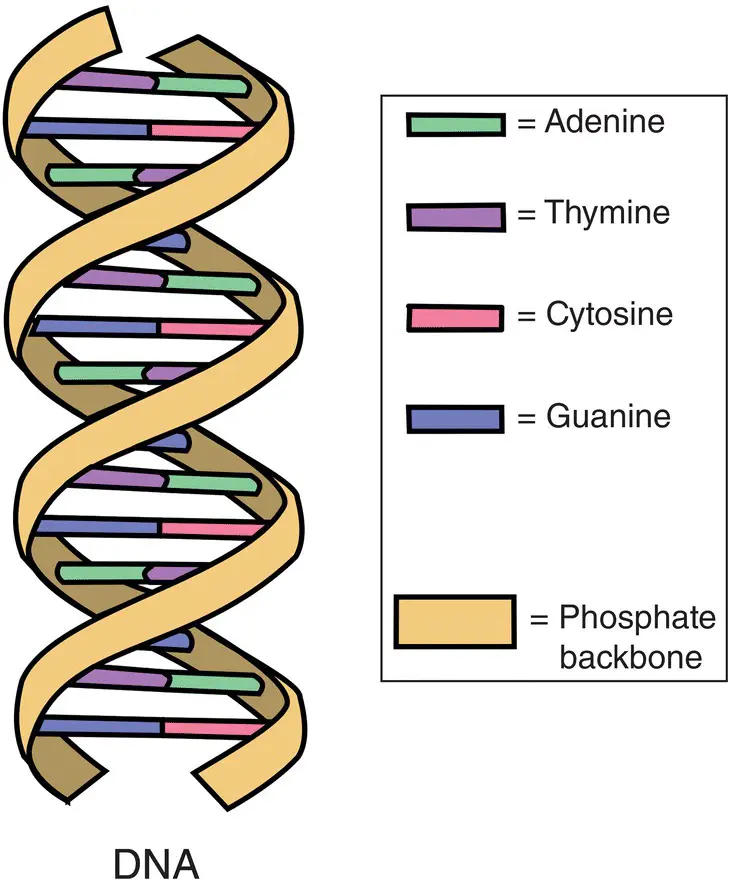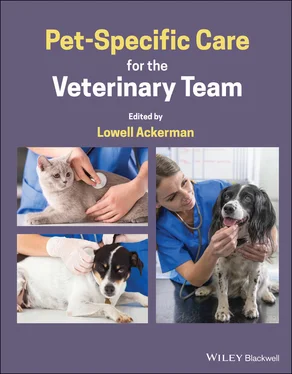Liquid biopsies, which are blood samples collected from cancer patients, can be beneficial in identifying specific cancer mutations by detecting cell‐free circulating tumor DNA in the blood. These mutations can serve as targets for therapy.
While the potential of Pmed is promising, challenges do exist that impact its widespread value. These include the changes in genetic mutations between primary tumors and metastases (i.e., cancer evolution) and the geographical genetic heterogeneity of tumors.
As the availability of precise cancer testing increases within the veterinary field, clinicians will need to be prepared to discuss these tests with their clients as well as interpret the results, or to develop relationships with teams with this expertise.
 MISCELLANEOUS
MISCELLANEOUS
2.20.7.1 Disclosure
The authors of this topic, and our disclosed relationship with Ethos, have no commercial products for Pmed at this time. We nonetheless continue ongoing clinical research to deliver the future value of this approach to patients.
Captain Thomas R. Cotrone, DVM, PhD, for careful review and insight into this topic.
1 AACR Project GENIE Consortium (2017). AACR project GENIE: powering precision medicine through an international consortium. Cancer Discov. 7 (8): 818–831.
2 Haber, D.A. and Velculescu, V.E. (2014). Blood‐based analyses of cancer: circulating tumor cells and circulating tumor DNA. Cancer Discov. 4 (6): 650–661.
3 Lloyd, K.C., Khanna, C., Hendricks, W. et al. (2016). Precision medicine: an opportunity for a paradigm shift in veterinary medicine. J. Am. Vet. Med. Assoc. 248 (1): 45–48.
4 Paoloni, M., Webb, C., Mazcko, C. et al. (2014). Prospective molecular profiling of canine cancers provides a clinically relevant comparative model for evaluating personalized medicine (Pmed) trials. PLoS One 9 (3): e90028.
5 Verma, M. (2012). Personalized medicine and cancer. J. Pers. Med. 2 (1): 1–14.
Section 3 Hereditary Considerations
Lowell Ackerman, DVM, DACVD, MBA, MPA, CVA, MRCVS
Global Consultant, Author, and Lecturer, MA, USA
 BASICS
BASICS
3.1.1 Summary
When an animal is born, it receives half of its genetic blueprint from its father and half from its mother. This combination of genes is what accounts for the animal being a truly unique individual, not a clone of the parents.
Allele:A variant or alternative form of a gene, found at the same location on a chromosome, and which can result in different observable traits.
Clone:Derivative of an animal with which it is genetically identical.
Codon:A sequence of three nucleotides that represents amino acids or start and stop commands as DNA constituents.
Exon:A segment of nucleic acid (DNA or RNA) that codes for specific proteins or peptides.
Genetics:The study of genes and how traits or conditions are passed from one generation to the next.
Genome:The complete set of genes for an animal.
Genomics:The study of the entire genome, and its combined influence on complex diseases and the impact of environmental factors such as diet, exercise, medications, and toxins on genes.
Genotype: An individual's genetic constitution.
Heterozygote:An individual with two different alleles for a given gene.
Homozygote:An individual with two identical alleles for a given gene.
Intron:A segment of nucleic acid (DNA or RNA) that interrupts the sequence within genes but does not code for proteins.
Locus:A fixed position on a chromosome for a gene or marker.
Microsatellite:A tract of DNA in which certain base pairs are repeated. They are sometimes referred to as short tandem repeats.
Open Reading Frame:A continuous stretch of amino acid‐forming codons that has the ability to be translated into a protein or peptide.
Phene:A trait or characteristic that is genetically determined.
Phenotype:Observable characteristics or traits that result from the interaction of the genotype with the environment.
Polymorphism:Genetic variation within a population and with which selection pressures can operate.
Short Interspersed Element:Noncoding sequences of DNA that are useful markers of divergent evolution between species.
Single Nucleotide Polymorphism ( SNP ): Genetic variation in a single DNA building block (nucleotide) that occurs at a specific position in the genome and is present within the population. There are millions of SNPs in the genome, most commonly located in the DNA between genes. Most have little or no impact on health and disease, but some can predict an individual's risk of developing particular diseases, likely response to certain drugs, or susceptibility to environmental factors.
 MAIN CONCEPTS
MAIN CONCEPTS
3.1.3 DNA: The Fabric of Life
DNA is a fabulous device for conserving everything that makes a living being what it is. Whether you believe in evolution or divine intervention, DNA contains a lot more than just the genes that code for all of a living thing's features.
It is the protein‐coding DNA that we are most concerned with as we attempt to understand the genetics of phenes, traits, and diseases. DNA is a molecule composed of two nucleotide chains wrapped around one another in a form known as a double helix. Each nucleotide (or polynucleotide) chain is composed of individual nucleotides, which in turn are composed of four nucleobases (cytosine, guanine, adenine or thymine), a sugar molecule (deoxyribose), and a phosphate group. The nucleotides occur in chains in which the sugar of one nucleotide binds to the phosphate group in the next, and the two separate chains are bound together by the nucleobase pairs, such that cytosine (C) binds to guanine (G) and adenine (A) binds to thymine (T). The structure of the double helix resembles a ladder twisted on its long access, with the nucleobase pairs resembling the rungs and the nucleotide chains resembling the rails or stiles ( Figure 3.1.1).

Figure 3.1.1 Double helix structure of DNA.
Source: From Forluvoft, DNA simple2. Wikimedia Commons. Public Domain.
DNA is organized into paired structures, known as chromosomes. Each species has a defined number of chromosomes (23 pairs in humans, 39 pairs in dogs, and 19 pairs in the cat). Two of those chromosomes are known as sex chromosomes (X and Y chromosomes) and the remainder are known as autosomes. Males have one X and one Y chromosome and females have two X chromosomes.
Читать дальше

 MISCELLANEOUS
MISCELLANEOUS BASICS
BASICS MAIN CONCEPTS
MAIN CONCEPTS











